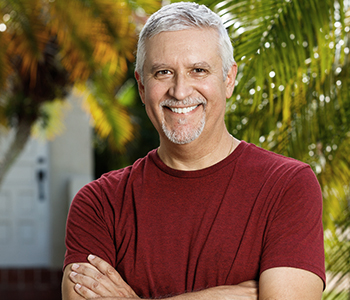Kevin Clauss, M.D.
Dr. Kevin Clauss was born and raised in Albuquerque, New Mexico. His journey in medicine began in Austin, where he graduated with high honors from the University of Texas, with a bachelor’s degree in neurobiology. Hook ‘em Horns! Dr. Clauss’ dedication propelled him to the top of his class at the UT Health San Antonio Long School of Medicine, where he graduated in the top 5% and was honored with induction into Alpha Omega Alpha, a prestigious medical honor society.
Fueling his passion for ophthalmology, Dr. Clauss pursued residency training at the renowned Bascom Palmer Eye Institute/University of Miami, which is consistently ranked as a premier ophthalmology program in the nation. Following residency, Dr. Clauss pursued two years of advanced training in oculoplastic and orbit surgery. Accredited by the American Society of Oculoplastic and Reconstructive Surgery (ASOPRS), this subspecialty training focused on eyelid, orbit, lacrimal system, and facial cosmetic and reconstructive surgery.
Committed to advancing medical knowledge, Dr. Clauss has contributed many peer-reviewed publications, several book chapters and numerous conference presentations. He stays committed to mastering the latest innovative technologies and techniques for oculoplastic surgery and facial aesthetics. He is fluent in English, and proficient in Spanish.
Outside of his professional endeavors, Dr. Clauss finds joy in spending time with his wife (Gwen), two dogs (Kygo and Kylie) and two horses (Drake and Cassie). A sports enthusiast, Dr. Clauss enjoys playing basketball, tennis, pickleball, and golf, and cheering on the Texas Longhorns football team. He also finds relaxation in traveling, hiking, and unwinding on the beach.
Dr. Clauss sees patients of all ages and offers the following services:
- Cosmetic Surgery and Procedures:
- Cosmetic Upper eyelid blepharoplasty
- Cosmetic Lower eyelid blepharoplasty
- Cosmetic Eyebrow and midface lifts
- Botulinum toxin injections
- Filler injections
- Functional Services:
- Upper Eyelid Blepharoplasty for Dermatochalasis
- Eyelid Ptosis Repair
- Eyebrow Ptosis Repair
- Eyelid Malposition Repair (entropion, ectropion, retraction, lagophthalmos)
- Eyelash Malposition (trichiasis, distichiasis)
- Eyelid Cancer and Neoplasms
- Benign skin growth removal
- Biopsies
- Moh’s Surgery Reconstruction
- Lacrimal aka tear drainage system
- Dacryocytorhinostomy
- Probing, Stenting
- Punctoplasty
- Orbit surgery
- Orbit malignancies and neoplasms (biopsy and removal)
- Orbital decompression
- Orbit fractures (trauma)
- Eye Removal
- Enucleation
- Evisceration
- Orbit implant revision and socket reconstruction
- Anophthalmia routine care
Functional Services:
-
Upper eyelid Blepharoplasty
- One of the earliest signs of aging changes in a person’s face is the laxity of the upper eyelid skin. The excess skin and fat in the eyelid is called dermatochalasis. The extra skin may hood, hiding the eyelashes and eyelid platform, and make the lid look droopy. When the dermatochalasis affects the superior visual field, it becomes a functional problem and eligible for insurance coverage in most cases
- Dr. Clauss performs functional upper eyelid blepharoplasties, a minimally invasive procedure that restores a youthful and energetic look. An incision is made in the eyelid crease (to hide the scar), and excess skin is removed. Any prominent fat is removed or repositioned. If the upper eyelid is too low (ptosis), the surgery is usually combined with a ptosis repair.
-
Ptosis Repair
- For patients with eyelid ptosis (Blepharoptosis), the eyelid rests at an abnormally low position, and can interfere with the visual axis, affecting vision. Lifting the eyelid provides improvement in vision, resets the eyelid skin crease/fold, and gives a more youthful, open, and rejuvenated appearance
- Dr. Clauss will assess the characteristics of your ptosis, and discuss the surgery options for you. There are several difference techniques available, including external (ELA) vs internal (ILA) levator advancements, and frontalis slings/advancements. Often, eyelid ptosis repair is combined with blepharoplasty and/or eyebrow ptosis repair
-
Eyelid bumps and lumps (Benign Neoplasms)
- Lesions on the eyelid are very common, and may cause heaviness to the eyelid, interfere with the visual axis, or be cosmetically displeasing to patients. Common benign eyelid lesions include chalazion/hordeolum (aka stye), nevus (aka mole), papilloma (skin tags, warts, seborrheic keratotosis), cyst, xanthelasma, etc
- Dr. Clauss performs removal of eyelid lesions under local anesthesia, commonly in the office. Usually, no stitches are required and recovery is quick. Any removed lesions are routinely sent for pathology evaluation.
-
Eyelid Cancer and Moh’s defect Reconstructions (Malignancy Neoplasms)
- They eyelids are a common location for the development of skin cancers. Particularly in South Florida, it is critical to routinely survey for eyelid malignancies. The most common skin cancers encountered on the eyelid include basal cell carcinoma (BCC) and squamous cell carcinoma (SCC). Other eyelid cancers include sebaceous cell carcinoma, Melanoma, and Merkel cell carcinoma.
- If you are diagnosed with a concerning eyelid lesion, a biopsy is recommended. Usually just a small piece is removed in the office and sent for pathology. If malignancy is confirmed, you will be referred to a dermatologist specializing in Moh’s surgery. Once the eyelid cancer is completely removed, Dr. Clauss will perform the eyelid reconstruction. Typically, defects are closed by rotating adjacent skin/muscle. However, sometimes skin grafts are needed. For larger defects (particularly >50% of the eyelid, or those involving the tear drainage system), more complex reconstructions are necessarily and will be discussed with Dr. Clauss.
-
Tearing/Eye Watering (aka epiphora)
- The lacrimal system aka tear drainage system collects tears from the inner corner of the eye and drains into the nose. The opening on the eyelids is called the punctum, tears then drain through the canaliculus, into the lacrimal sac, down the nasolacrimal duct, then ultimately draining into the middle meatus of the nose. Obstruction at any point along the plumbing system can result in bothersome tearing. Congenital nasolacrimal duct obstruction often resolves on its own, but other children will need intervention. Acquired nasolacrimal duct obstruction can be due to trauma, glaucoma drops, history of eye infections, and history of radiation to the head/neck area.
- Dr. Clauss will evaluate the cause of your tearing. Often times, the evaluation includes an in-office procedure that involves dilating the punctum and irrigating saline solution to test if the lacrimal drainage system is functioning properly. Dr. Clauss offers several surgeries to correct tearing depending on the etiology. These surgeries include punctoplasty, probing and stenting, dacryocystorhinostomy (DCR), and conjunctivodacryocytorhinostomy (cDCR).
-
Orbit surgery
- The orbit is the space surrounding the eyeball, and consists of muscles, nerves, blood vessels, fat, and the four bone walls. Trauma to the periocular region may result in orbital wall fractures. Inflammatory conditions (such as thyroid eye disease) may result in enlargement of muscle and fat and cause a bulgy eye (proptosis).
- Dr. Clauss performs several orbit surgeries, including fracture repairs, orbital tumor biopsy/removal, orbital wall decompression
-
Eyelid malposition
- Common eyelid malposition conditions include entropion (inward turning of eyelid), ectropion (outward turning of eyelid), eyelid retraction, and lagophthalmos (inability to completely close eyelids). These conditions can result in eye itching, burning, scratching and can also be a cause of tearing. If the lateral canthal tendon is disinserted, the outside corner of the eye loses its normal almond shape, and appears rounder. Often, these conditions may be associated with eyelash malposition (trichiasis, distichiasis).
- Dr. Clauss performs numerous surgeries and the technique depends on the type of eyelid malposition and why it is occurring. Typically, repair includes eyelid tightening and reattaching the eyelid retractors and tendons. Any abnormal eyelashes can be addressed at the same time.
-
Anophthalmia and Eye Removal
- Numerous conditions may result in the loss of any eye. Sometimes, children are born with no eyes (congenital anophthalmia). Sometimes eyes must be removed (acquired anophthalmia) due to cancer, trauma, or infection. Chronically blind eyes may shrink (phthisis) and this may be cosmetically displeasing to patients. Further, if there is pain associated with the blind eye, eye removal surgery may be indicated.
- Dr. Clauss performs eye removal surgery. When an eye is removed, an orbital implant is used to replace the volume loss. The socket typically takes around 6 weeks to heal, after which an ocularist can make an ocular prosthesis. These prostheses are hand made to match the remaining eye. They have movement and tend to have great cosmetic appearance.
- Dr. Clauss also performs surgery on the eye socket. If an ocular prosthesis is not fitting properly, mucous membrane grafting is sometimes needed to deepen the fornices for a proper fit. If the socket has insufficient volume, orbital implants can be placed.













